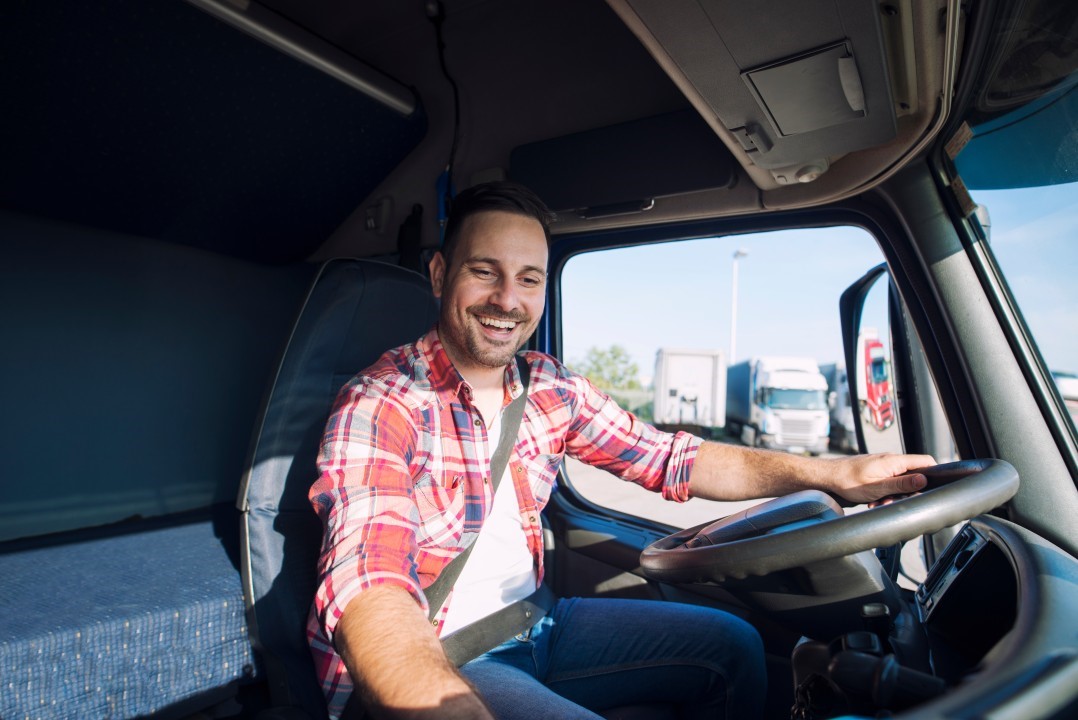
Susie Jones
De kracht van muziek in de vrachtwagenindustrie
Gemaakt: 28-08-2024
•
Bijgewerkt: 28-08-2024
Voor vrachtwagenchauffeurs die eindeloos door het Verenigd Koninkrijk en Europa rijden, is muziek meer dan alleen achtergrondgeluid - het is een metgezel die verveling tegengaat en hen alert, betrokken en gefocust houdt op de reis die voor hen ligt. Muziek kan het welzijn van de chauffeur verbeteren en de veiligheid op de weg vergroten.
Waarom muziek belangrijk is voor vrachtwagenchauffeurs
Met vele uren onderweg en dagen weg van vrienden en familie kan het leven van een vrachtwagenchauffeur soms een eenzame aangelegenheid zijn. Muziek kan een reis veranderen door de geest te verheffen en de chauffeur geconcentreerd op de weg te houden. Muziek kan ook zorgen voor rust en kalmte tijdens de rustperiodes van de chauffeur.
Muziek en veiligheid van de bestuurder
Muziek voorkomt niet alleen verveling op de weg, maar kan ook de verkeersveiligheid beïnvloeden. Een onderzoek toonde aan dat harde muziek (alles boven 95 decibel) de reactietijd met wel 20% kan verkorten. Het onderzoek toonde ook aan dat muziek van 55 decibel de rijprestaties verbetert - dezelfde bestuurders presteerden beter dan degenen zonder muziek.
Muziek kan ook je stemming veranderen in stressvolle situaties - zachte rock en jazz kunnen de focus en concentratie van de bestuurder verbeteren. Wie van snellere muziek houdt, moet oppassen. Tests hebben aangetoond dat muziek met hogere beats per minuut er eerder voor zorgt dat je snel rijdt en je snelheid onderschat. In sommige gevallen resulteerde snellere muziek in slingeren, het negeren van rode lichten en een verhoogde kans op botsingen.
Uit onderzoek uitgevoerd door Autotrader bleek dat de beste nummers voor vrachtwagenchauffeurs afkomstig waren van popartiesten omdat ze de concentratie verbeterden - het onderzoek werd uitgevoerd aan de hand van een reeks tests voor het waarnemen van gevaren terwijl er werd geluisterd naar afspeellijsten van 20 verschillende artiesten. Drake kwam als beste uit de bus met een score van 59,5/75, terwijl Ariana Grande en Eminem op de tweede plaats kwamen met scores van 58,5/75.
Het effect op lichamelijke en geestelijke gezondheid
JED Foundation ontdekte dat muziek om verschillende redenen goed is voor de geestelijke gezondheid:
Afleiding - Muziek kan je gedachten afleiden van dingen die je dwarszitten en fungeren als een plek om te ontsnappen.
Stressniveau - Bepaalde soorten muziek kunnen het cortisolniveau verlagen, wat leidt tot minder stress. Als je luistert naar muziek waar je van geniet, komt er ook endorfine vrij, wat je een gevoel van welzijn geeft.
Activeert de hersenen - Uit een onderzoek uitgevoerd door AARP bleek dat mensen die regelmatig naar muziek luisterden minder angstig en depressief waren. Bovendien beoordeelde 69% van degenen die vaak naar muziek luisterden hun gezondheid als uitstekend of zeer goed.
Stemmingverhogend - Iemands lievelingsliedje kan zijn humeur onmiddellijk verbeteren.
Muziek heeft niet alleen invloed op de mentale gezondheid, maar ook op de fysieke gezondheid van een bestuurder. Een studie uitgevoerd door meerdere universiteiten in Brazilië, het Verenigd Koninkrijk en Italië suggereerde dat luisteren naar muziek invloed heeft op cardiovasculaire stress. Uit het onderzoek bleek dat er minder stress op het hart was wanneer er tijdens het rijden naar muziek werd geluisterd.
De ultieme afspeellijst voor vrachtwagens
The Ultimate Trucking Playlist is gemaakt voor chauffeurs, door chauffeurs. Elke week vragen we onze community van vrachtwagenchauffeurs om te stemmen naar welke nummers ze onderweg willen luisteren. Zorg ervoor dat je favoriete nummer de lijst haalt door naar onze Facebook pagina te gaan.
(https://prodsnapstorage.blob.core.windows.net/public-news/c2e5ebf3-431b-4896-a55c-f19f7f7ee61e-new%20trucking%20playlist.png)
Kijken vrachtwagenchauffeurs tv?
Veel chauffeurs brengen hun vrije tijd achter het stuur door met het kijken naar tv-programma's en films. Streamingdiensten hebben het makkelijker dan ooit gemaakt voor chauffeurs om toegang te krijgen tot de nieuwste releases. Bovendien zijn veel vrachtwagens uitgerust met satellietmontagemogelijkheden, zodat chauffeurs live tv kunnen kijken vanuit het comfort van hun cabine.
Luisteren vrachtwagenchauffeurs naar luisterboeken?
Muziek speelt een belangrijke rol tijdens de reis van een vrachtwagenchauffeur, maar het is niet het enige dat de verveling weghoudt tijdens lange ritten. Na een gesprek met een groep vrachtwagenchauffeurs over hun luistervoorkeuren, ontdekte Road Pro dat audioboeken op de tweede plaats kwamen, met traditionele radio op de eerste plaats.
Het gebruik van luisterboeken achter het stuur is onder de loep genomen, omdat velen suggereren dat ze afleiden. Muziek is makkelijker te negeren, maar dat betekent niet dat luisterboeken onveilig zijn. Studies ontdekten dat veel bestuurders niet werden beïnvloed door het luisteren naar een luisterboek - dit was alleen op "saaie" parcours. Bestuurders op meer verraderlijk terrein vonden het moeilijk om snel te reageren.



